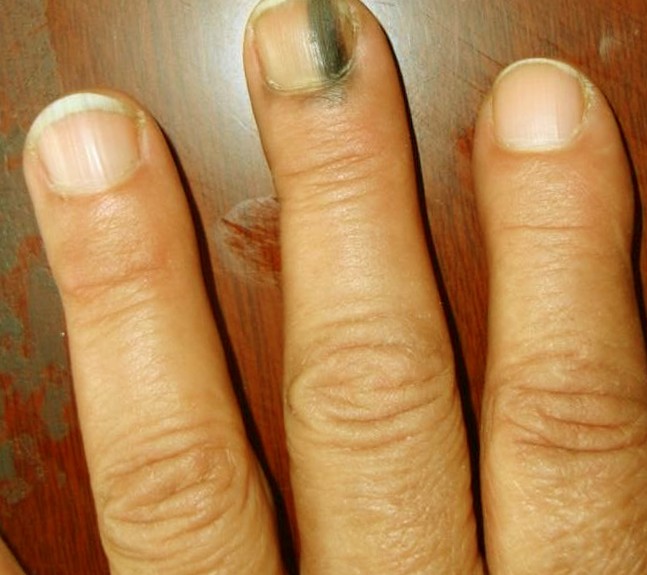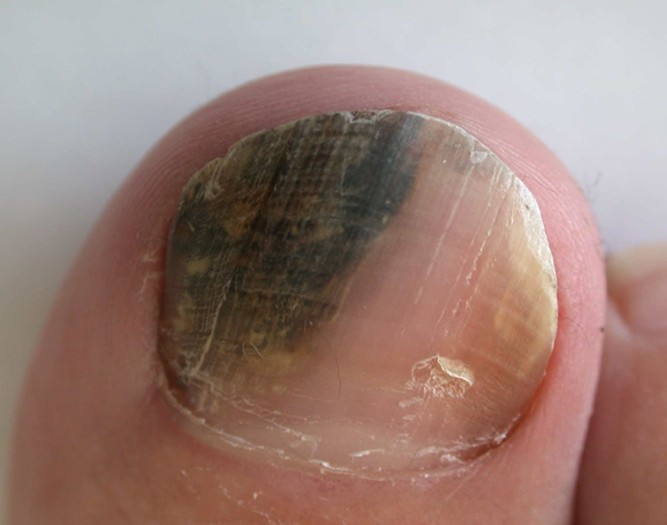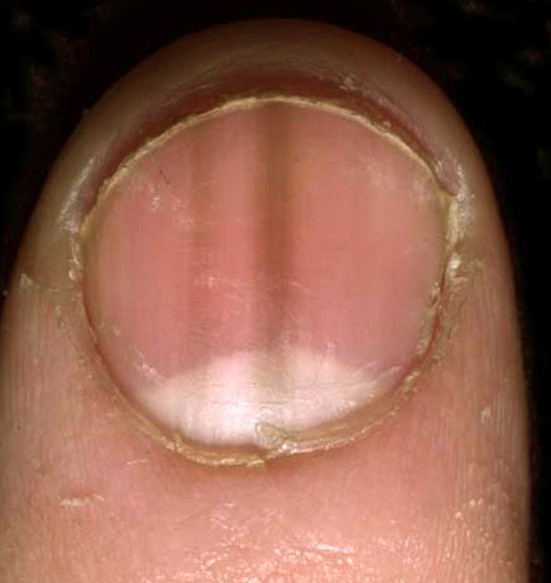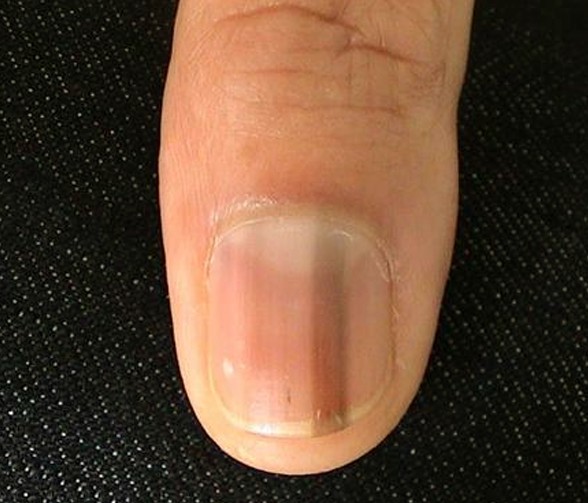Melanonychia
What is Melanonychia?
Melanonychia is a medical condition in which the nail plate has a pigmentation band that is either black or brown in color. There are two main types of melanonychia, meaning longitudinal (this being often times a sign of subungual melanoma) and transverse. This medical condition appears within other medical conditions that are benign, such as the common mole.
As it was already mentioned, the band of pigment appearing on a nail has to be properly investigated, as it might be a sign of melanoma. It seems that individuals with darker skin and Japanese people present a higher risk, the percentage being reduced in the white population. As for age and gender, there is no particular category affected by melanonychia.
Melanonychia Symptoms
These are the most common symptoms of melanonychia:
- Pigmentation band on the nail plate, of brown or black color
- Single or multiple nail presence
- The longitudinal type starts at the cuticle and ends at the free edge of the nail. Longitudinal melanonychia can be a sign of melanoma, being accompanied by the following:
- Change in nail appearance
- Alteration of nail color
- Modification of nail pattern
- Change in size of the pigmentation band
- Pain – sudden onset
- Ulceration or subungual blood
- The transverse type runs across the nail
- There are cases where the entire plate of the nail is affected
- Periungual pigmentation can be present (this is also known as benign pseudo-Hutchinson sign)
- Pigmentation bands are wider than 3 mm in 50% of the patients.
What Causes Melanonychia?
These are the most common causes of melanonychia:
- Moles
- Subungual melanoma
- Melanocytic hyperplasia or activation, such as the melanotic macule of the nail plate
- Dark skin – multiple bands
- Pregnancy – multiple bands
- Trauma
- Bad shoes
- Nail biting
- Subungual foreign body
- Radiation therapy
- Systemic disease (Addison syndrome, Cushing syndrome, B12 deficiency)
- Dermatological disease (psoriasis, lichen planus)
- Chemotherapy
- Drug related
- Iatrogenic causes
- Trauma
- Post-inflammatory event
Melanonychia Treatment
The first and most important thing is to treat the underlying condition that has led to the appearance of melanonychia. These are the most common courses of treatment undertaken specifically for melanonychia:
- Surgical excision of the total nail is recommended in case of melanoma
- If the melanoma is aggressive and invasive, then the surgeon might decide to perform a complete amputation of the distal phalanx of the affected finger. This guarantees the best chance for the cancer not to spread to other parts of the body and affect vital organs
- After the surgical excision, there will be other surgeries performed for the reconstruction of the area and the necessary skin grafting
- In case there is a suspicion of melanoma, then the doctor will probably recommended a biopsy of the lymph nodes to be performed as well
- If the melanonychia is caused by a benign condition and there are no other symptoms associated with the condition, then no treatment will be recommended by the specialist doctor
- If the condition is caused by the taking of a certain drug, then the recommendation is stop taking that particular medication and find an alternative.
As you have seen for yourself, there are cases in which no treatment is required for melanonychia. However, if you have been diagnosed with longitudinal melanonychia, you need to keep a close eye on that nail. If you notice any change in it whatsoever, be sure to go to the doctor and request further investigations. The risk of melanoma is present in all patients with this type of melanonychia.
Melanonychia Pictures
Pictures collection of the medical condition Melanonychia…





